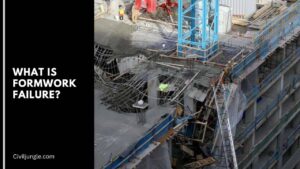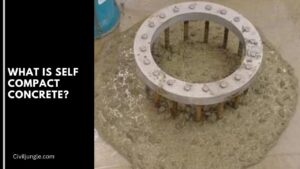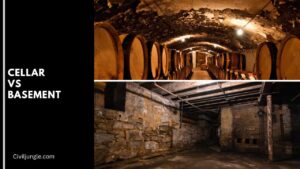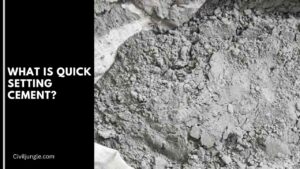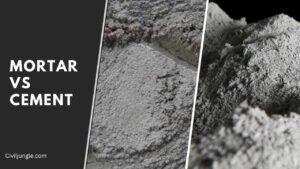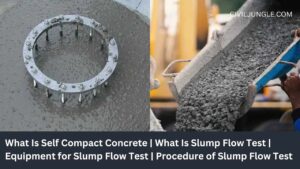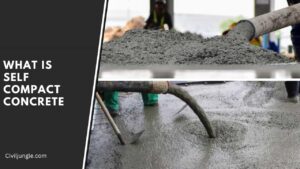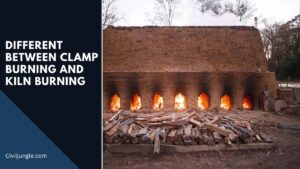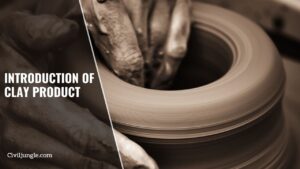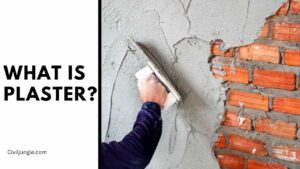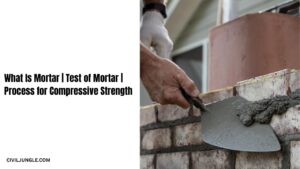What Is Formwork Failure? The construction of a concrete building needs formwork to support. Specific forms are engineered structures that are necessary to support loads like construction materials, fresh concrete, equipment, … [Read more...]
What Is Self Compact Concrete | What Is J-ring Test | Equipment of J-ring Test | Procedure of the J-Ring Test
What Is Self Compact Concrete? Making concrete structures without vibration has been done in the past. For example, the placement of concrete under-water is done by the use of tremie without vibration. Shaft concrete and mass … [Read more...]
What Is Rebar | Why use Reinforcement in Concrete | Types of Steel Reinforcement Bars
We know that Rebar. It is known as reinforcement steel and reinforcing steel. This is a steel bar or mesh bar of steel wire used in reinforced concrete and masonry structures to strengthen and hold this concrete in … [Read more...]
Cellar Vs Basement | What Is Cellar | What Is Basement
What Is Cellar? A cellar is a part of a building that is present entirely below the level of the curb. The cellar is used mainly as a storage location, as it is completely underground. A type of wine cellar is the most popular … [Read more...]
What Is Quick Setting Cement | Uses of Quick Setting Cement
What Is Quick Setting Cement? Quick setting cement is one of the types of cement. This cement setting time very high like initially set in 5 mins and the final set is achieved in 30 mins, and ordinary cement initially set in 30 … [Read more...]
Mortar Vs Cement | Types of Cement | Types of Mortar
Mortar Vs. Cement The difference between mortar and cement is that cement is the bonding agent, while the mortar is a product composed of cement, sand, and lime. Both substances have different purposes, as the cement is … [Read more...]
What Is Self Compact Concrete | Equipment V-Funnel Test | Procedure V-Funnel Test. | Procedure for V-funnel flow time at T5 mm
What Is Self Compact Concrete? Making concrete structures without vibration has been done in the past. For example, the placement of concrete under-water is done by the use of tremie without vibration. Shaft concrete and mass … [Read more...]
What Is Self Compact Concrete | What Is Slump Flow Test | Equipment for Slump Flow Test | Procedure of Slump Flow Test
What Is Self Compact Concrete? Making concrete structures without vibration has been done in the past. For example, the placement of concrete under-water is done by the use of tremie without vibration. Shaft concrete and mass … [Read more...]
What Is Self Compact Concrete | History of SCC | Advantages & Disadvantages of (SCC) Self Compacting Concrete
What Is Self Compact Concrete? Making concrete structures without vibration has been done in the past. For example, the placement of concrete under-water is done by the use of tremie without vibration. Shaft concrete and mass … [Read more...]
Requirements of Good DPC | Prevention of Dampness: Use of DPC | Methods of Damp proofing
Requirements of Good DPC Totally impervious and should not allow travel of dampness. Durable and keep the building damp proof permanently. Economical and easy in laying. Able to resist load to which it is subject. … [Read more...]
Different Between Clamp Burning and Kiln Burning | What Is Clamp Burning | What IS Kiln Burning
What Is Clamp Burning? A typical clamp is shown below figure The bricks and fuel are placed in alternate layers. The amount of fuel is reduced successively in the top layers. Clamp Burning Each brick tier consists of 4–5 … [Read more...]
Introduction of Clay Product | Types of Clay Product
Introduction of Clay Product There is a wide variety of structural clay products, broadly classified as facing materials, load-bearing materials, paving materials, roofing tile, and chemically resistant materials. Examples of … [Read more...]
IS 456 Most Important Point Part- 1
Metakaolin IMP Point As Per IS 456 • Metakaolin having fineness between 700 to 900 m2/kg may be used as pozzolanic material in concrete. (As Per IS Code-456, P-13, Cl. No: 5.2.1.4) • Note-Metaknoline is obtained by calcination of … [Read more...]
What Is Plaster | Types of Plaster As Per Material | Defects In Plastering
What Is Plaster? This id the process of covering rough walls, uneven surfaces in the construction house and other structures with a plastic material, called plaster or mortar. Sometimes, the term 'rendering' is used instead of … [Read more...]
What Is Mortar | Test of Mortar | Process for Compressive Strength
What Is Mortar? Mortar is an intimate mixture of binding material, fine aggregate, and water. When water is added into the dry mixture of binding material and the inert material, binding material develops the property that binds … [Read more...]
What Is Pedestal | Functions of Pedestal | Methods of Construction: Pedestals | Advantages and Disadvantages of Pedestal
What Is Pedestal? The term “Pedestal", so far in the Civil Engineering field is concerned, is a compressive structural member which is provided in between the footing and column, in order to transfer the load uniformly into the … [Read more...]
Difference Between M25 and M30 Concrete | What Is M25 Grade | What Is M30 Grade
What Is Concrete? Contrary to popular belief, concrete and cement are not the same; cement is really just one component of concrete. Concrete consists of three basic components: water, aggregate (rock, sand or gravel), and … [Read more...]
Must-Have Knowledge for Civil Engineers | Civil Basic Knowledge
We know the civil engineering line different work different parts of basic knowledge. So we are below points show. Drawing Points to Remember for Civil Site Engineers QA /QC Points to Remember for Civil Site Engineers … [Read more...]
- « Previous Page
- 1
- …
- 7
- 8
- 9
- 10
- 11
- …
- 18
- Next Page »
